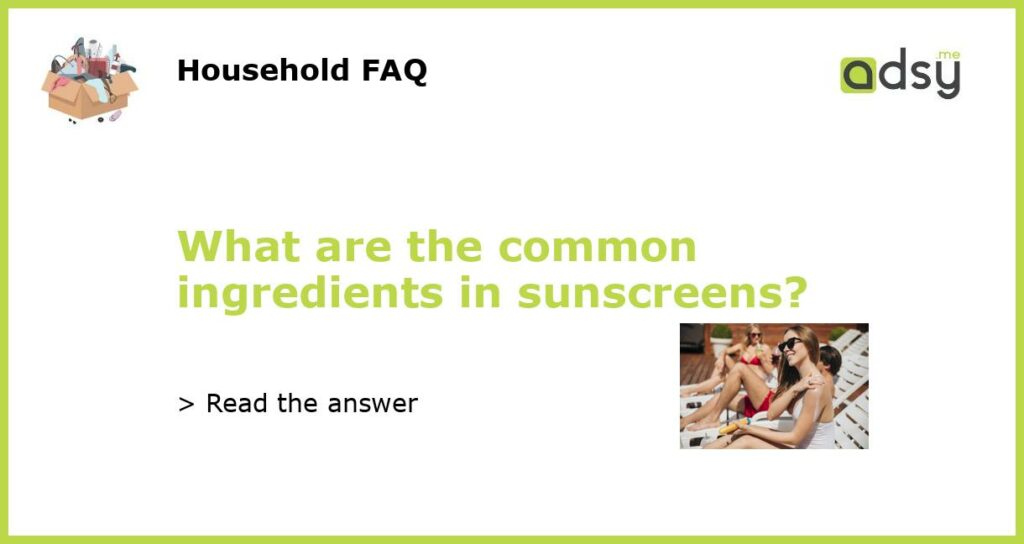Common Ingredients in Sunscreens
Sunscreens are an essential part of our daily skincare routine, especially during the summer months when we are exposed to harmful UV rays. These products work by protecting our skin from these rays and preventing sunburns, premature aging, and skin cancer. To understand how sunscreens work, it is important to know their common ingredients. Here are some of the most commonly used ingredients in sunscreens:
Zinc Oxide
Zinc oxide is a mineral that is widely used in sunscreens for its excellent broad-spectrum protection against both UVA and UVB rays. This ingredient creates a physical barrier on the skin, reflecting and scattering the UV rays away. Zinc oxide is often used in mineral or physical sunscreens as it is a natural ingredient that is safe for sensitive skin. It provides protection as soon as it is applied and is less likely to cause skin irritation compared to other ingredients.
Titanium Dioxide
Similar to zinc oxide, titanium dioxide is another mineral-based ingredient that offers broad-spectrum protection against UVA and UVB rays. It acts as a physical blocker, reflecting the sun’s rays away from the skin. Titanium dioxide is often used in combination with zinc oxide in mineral sunscreens to provide enhanced protection. It is generally well-tolerated by most skin types and is non-comedogenic, making it suitable for acne-prone skin.
Avobenzone
Avobenzone is a widely used chemical sunscreen ingredient that provides protection against UVA rays. It absorbs these rays and converts them into less harmful energy, thereby reducing the potential damage to the skin. Avobenzone is often combined with other chemical sunscreen ingredients to create a broad-spectrum protection formula. It is important to note that avobenzone can become unstable under sunlight, so it is often combined with stabilizing ingredients like octocrylene or encapsulated in other formulations to prevent degradation.
Octinoxate
Octinoxate, also known as ethylhexyl methoxycinnamate, is a chemical sunscreen ingredient that primarily protects against UVB rays. It absorbs these rays and prevents them from penetrating the skin, thus reducing the risk of sunburns. Octinoxate is commonly used in combination with other sunscreen agents to create a broad-spectrum protection formula. However, some studies suggest that octinoxate may have hormonal effects, so individuals with hormone-related concerns may prefer alternative sunscreen options.
Oxybenzone
Oxybenzone is another chemical sunscreen ingredient that offers protection against both UVA and UVB rays. It is highly effective at absorbing these rays and converting them into less harmful energy. Oxybenzone is often used in combination with other sunscreen ingredients to provide broad-spectrum protection. However, some studies have raised concerns about oxybenzone’s potential hormonal effects and its impact on coral reefs. As a result, some individuals may opt for oxybenzone-free sunscreens or reef-safe alternatives.






